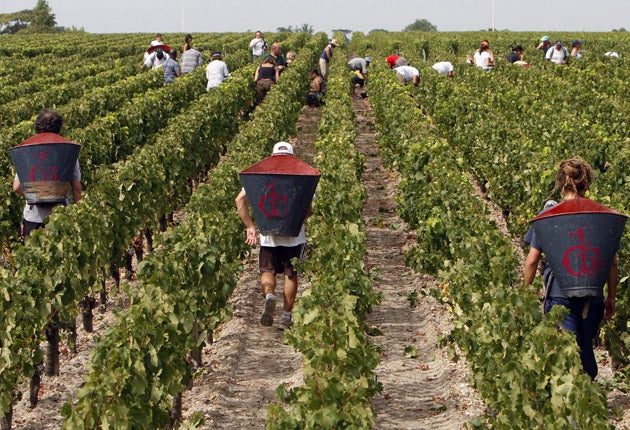The Timeline: Wine production

5000BC
Iran was the world's first major wine producer. Wine presses and amphora – large vase-like pottery wine flasks – with the preserved residue of tannin and tartrate chemicals, both found in wine, have been found on digs in the Hajji Firuz Tepe region of the country. Carbon dating suggests they are 7,000 years old.
3000BC
Iran might be the spiritual home of wine making but it was the Egyptians who began to do it on a truly large scale. Rather than make it in small batches, they started to ferment grapes in large vats and started experimenting with different methods of bottling wine. Indeed, several preserved bottles containing the residue of red wine were found by Howard Carter in Tutankhamun's tomb.
Middle Ages
Wine production took on a religious character in the 5th to 10th century, as wine was increasingly bottled in Benedictine monasteries in the wine-growing regions of Burgundy and Champagne. Although produced for the abbots and monks – Benedictine rules prescribed moderate wine drinking – the excess was sold to locals. One of the most famous burgundies sold today, Clos de Vougeot, was originally the house wine of the monastery at Cluny.
Late 18th Century
New World wine got a boost in the late 18th and early 19th century when a grapevine-hungry louse, Phylloxera vasatrix, decimated vineyards across Europe. In response to demand, John James Dufour, a Swiss-born farmer, started the first large-scale vineyard in Jessamine County, Kentucky in the last decade of the 18th century.
19th Century
Things got technical in the 19th century when scientific advances were put to use in making wine. Louis Pasteur, the French biologist, discovered the link between yeast and grape fermentation and vineyards were able to control the speed at which grape juice fermented and so change the character of the wine.
21st Century
The former industrial ports of Calais and Boulogne took on a green hue last week, when spoil heaps used as dumping ground for industrial by-products were turned into vineyards. It is hoped that chardonnay made from the grapes grown on the steep-sloped mounds will be ready for drinking for 2013.
Join our commenting forum
Join thought-provoking conversations, follow other Independent readers and see their replies
Comments
Bookmark popover
Removed from bookmarks